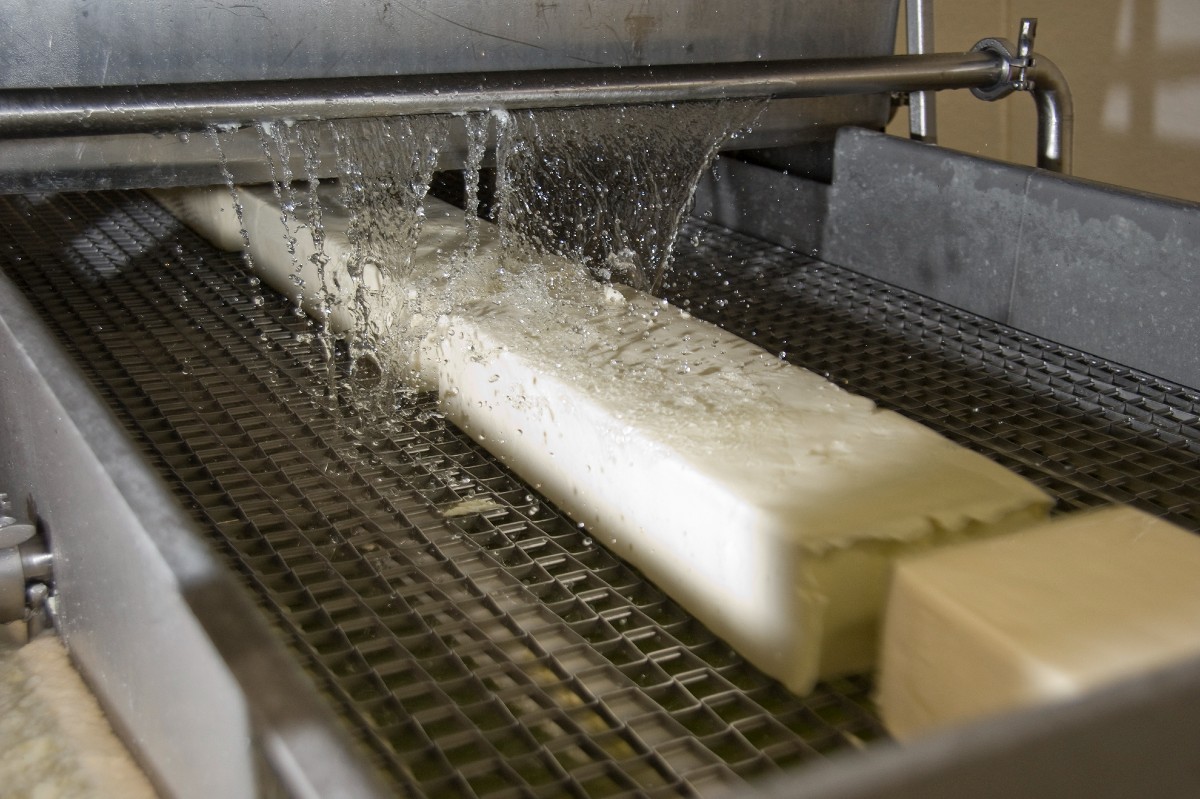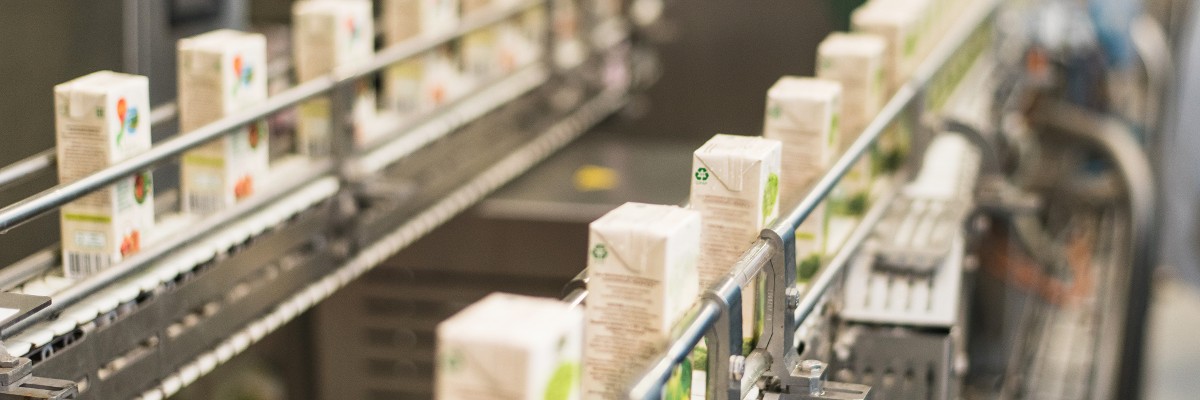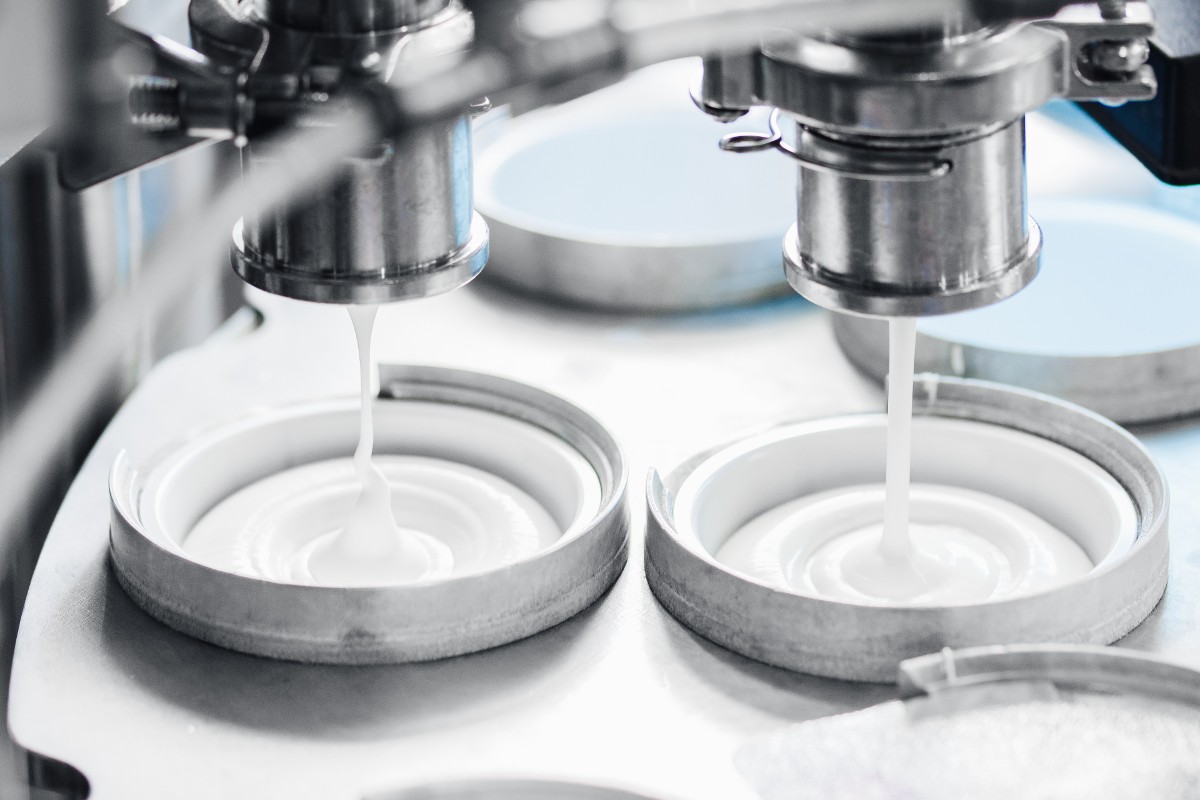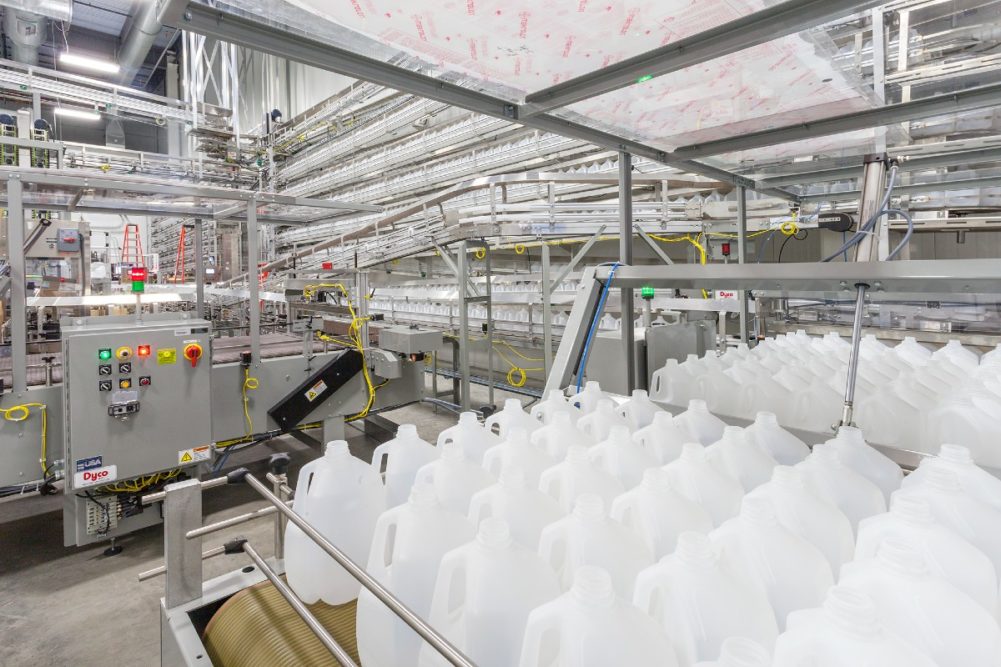Whether it is a new dairy processor breaking ground on its first construction project or a company updating and expanding operations, industry leaders are creating future-ready facilities that leverage data to inform operations.
Considering how to build a processing plant that will not only meet a company’s current growth projections but also allow room for further growth without significant cost is top-of-mind when completing dairy industry construction projects, said Forrest McNabb, president of Salt Lake City-based Big-D Construction. He said there is currently significant demand in the industry for new greenfield projects, and construction didn’t slow down during the pandemic.
“The current focus is growth,” McNabb said.
For upgrades to existing plants, the priority should be to allow companies to grow in a way that doesn’t impact operations while accommodating new capacity demands.
Projects in the works
Tillamook County Creamery Association, Tillamook, Ore., has seen the ice cream category grow significantly recently, and the company is responding to this demand by opening a facility in Decatur, Ill., in late 2024 as its first location outside of Oregon.
The new plant will focus exclusively on ice cream production and allow the company to pursue a more regionally focused supply chain for the product. Such an approach is necessary as ice cream is expensive to ship frozen and is subject to altitude and temperature shock, said Mike Bever, executive vice president of operations.
“All of that has led us to a model where we have company-owned plants and contract manufacturers in the right geographies of the country to support our national supply chain,” Bever said. “We’ve grown to the point where we needed additional capacity, and we needed it in the right place. That’s what drove us to open a new manufacturing facility outside of Oregon.”
The Illinois facility was previously owned by Prairie Farms, and Tillamook is working to upgrade the lines with new fillers and controls while also completing external infrastructure projects. Because the facility is older, work is also needed to bring it up to current food safety standards. Automation of valves and controls as well as auto-palletizing and robotics will also be featured on the production floor.
As expanding ice cream capacity is becoming increasingly important, Bever said this facility likely won’t be the company’s last play in the category. Additionally, he said having a dedicated and traceable milk supply is important in making plans for the Illinois plant, and knowing what farms and what cows will be producing that milk is essential.
“Everyone is moving further and further to that point where there is complete traceability from the finished product back to the cow producing the milk,” Bever said.
 Photo: Big-D Construction
Photo: Big-D ConstructionAs a new dairy processor focusing on UHT, aseptic and extended shelf-life milk products, Suntado has plans to begin operations through a plant under construction in Burley, Idaho. The company was formed as the result of the decision of two area dairy farmers – Dirk Reitsma and Jesus Hurtado – to vertically integrate.
Suntado will serve as a co-manufacturer, and the Idaho facility will also have the flexibility to handle alternative beverages, chief executive officer Jeffry Williams said.
The facility’s initial phase, which is scheduled to be fully commissioned by the middle of 2024, will have the capability of processing between 650,000 and 800,000 pounds of milk per day using six lines. The product mix will include 70% dairy milk products and 30% alternative beverages using diverse equipment including Tetra Pak products. Williams said future phases of construction could increase the capacity of the facility to 18 lines.
“We are being mindful of the fact that we want to expand, so we are creating an environment that will be easier for us to add additional equipment,” Williams said.
Suntado’s owners wanted to focus on extended shelf-life products due to their sustainable nature and ability to reduce waste and mileage. Efficiencies in the facility’s operations will also be driven by the fact the owners have dairies within 15 miles of the plant, and they will also require customers to order high enough minimum quantities to maximize throughput.
Amidst nagging supply chain and macro-economic issues, the key to a new construction is making sure a processor has secured the right contractor, architect, engineer and vendors, Williams said.
“It behooves every company to look at how they can automate as much as possible because of that threat of limited supply of labor,” he said.
Making sense of the data
Outfitting facilities with the latest technology that optimizes uptime and uses data to inform operations is also critical. It can be challenging to create a modern network in facilities with significant age, and Nancy Finnegan, vice president of sales for FactoryEye by Magic Software, said having modern software is only part of the solution as a foundation of solid architecture is essential.
When Finnegan works to help a dairy processor modernize its operations, she begins by going to the production floor. In many cases, one of the first things she sees is a whiteboard. Her response is to question where the information on the whiteboard came from, how long it took to compile and how business would be improved if the data was stored and presented in a more efficient manner.
“We are very much focused on a crawl, walk, run, sprint implementation approach,” Finnegan said.
When making modernization plans, she said it’s important for processors to consider their goals and how they can leverage what they already have.
FactoryEye is focused on data integrity, and in many cases because there is no architecture holding a processor’s data and allowing for analysis, a significant amount of guesswork occurs, Finnegan said.
“In the dairy world you do see a lot of siloed data,” Finnegan said. “So instead of thinking about it as an overhaul they should really be thinking about it as a step process or a sprint process where they can better organize their data, put it into a modern data architecture, which will make it easier for them to use, and then roll out visualization tools — dashboards, alarms, alerts — that will actually help them achieve their future strategic initiatives.”
Additionally, machine learning and artificial intelligence allow processors to prove their assumptions, determine when exactly a machine should undergo maintenance and make operational improvements around actual data.
To implement such solutions, it is critical to encourage all members of an operation to be onboard with modern updates.
“Change management is a huge part of the overall picture,” Finnegan said. “It’s very important to bring the operators in early so they feel they have that buy-in. It’s also important to realize technology has evolved and operator-specific use cases can be configured to make the user not only more productive and improve throughput, but also help them to do their job better and make them a happier employee.”
Additionally, improving track-and-trace capabilities is critical to meeting the demands on the industry from both consumers and regulatory entities.
“Traceability, the architecture, RFID and better scanning is really something that should and will be a big game changer for the dairy processing industry,” Finnegan said.
 Photo: etonastenka - stock.adobe.com
Photo: etonastenka - stock.adobe.com Optimized packaging
As an OEM-neutral integrator of packaging technology, Integrated Packaging Machinery (IPM), Rockford, Mich., seeks to help dairy processors control entire packaging lines as one system, business development manager Tom Wiersma said.
“In the case of a new line as part of an expansion or a greenfield project, we think of the entire line of a dozen or more machines and functions as a total machine,” Wiersma said. “We design the automated solution while thinking of the whole series of machine centers and unit operations as a single entity, and that’s how we keep a dairy processing line up and running. In the case of a major rebuild, we’ll conduct a pre-design uptime audit to document the current state before recommending a future state packaging solution. Our customers have a lot of capital tied up in their operation and a lot of customers to satisfy. It is incumbent upon us to help them optimize their packaging line assets.”
IPM uses centralized control systems to equip the packaging line with the control to speed up, accommodate micro-stops, slow down and accommodate surges as needed. The goal is to engineer an automation solution that never leaves a machine downstream waiting for product and that always pulls away product from that unit operation.
“The whole emphasis is on dairy plant uptime,” Wiersma said. “There is so much money involved in the raw material, the ingredients, and the processing portion, and they simply can’t afford to shut down unexpectedly. Our focus is all on uptime and finding the best combination of best-fit machines and packaging line OEE to ensure optimal predictable uptime.”
Consumers are increasingly demanding products in variety packs that include some combinations of SKUs as well as complex depalletizing, conveying, case-packing, robotic palletizing and shrink-wrapping system controlled from a central system. IPM is working to create maximum flexibility into the entire line to accommodate the changeovers required for a variety of sizes, containers and weights.
Companies are also looking to use thinner, more sustainable material in packaging, but those types of materials require special consideration and handling to prevent leaks and punctures. IPM works to increase product sustainability by accommodating those needs. Additionally, running the entire system as one entity also reduces energy demand, Wiersma said.
“As our customers seek to more precisely meet their customers’ needs, that has an impact on the packaging technology we supply, integrate and control on their behalf,” Wiersma said. “Integrated controlled systems are essential, whether it’s addressing the more granular SKU mix, rainbow pallets or reducing energy footprint, it all comes down to maintaining uptime and controlling that entire line as a single entity.”
 Photo: Parilov - stock.adobe.com
Photo: Parilov - stock.adobe.comPredictive maintenance
Alfa Laval focuses on helping processors optimize their operations by enabling them to better understand their water and energy usage and exactly what is happening within their systems, said Jim LeClair, fluid handling commercial manager.
The company’s ThinkTop control units for valves help minimize water usage and waste and maximize product output.
The company also offers its condition monitoring system that analyzes temperatures and vibrations from rotating equipment like pumps to reduce failures and increase uptime. The system connects to IoT devices and analytics to maximize throughput and increase plant productivity. This allows for continuous monitoring of machine health from a remote location and provides the data needed to predict when machine maintenance will be required and plan for downtime.
All these features help move the industry to a point where operators can simply open their phones to check the status of operations, a benefit that will ideally give companies more production capabilities in minimal time and without having to take on a new construction project.
LeClair said he anticipates in the future artificial intelligence within a plant’s control system will begin to integrate data from different meters, valves, pumps and systems to continuously inform operations. This differs from the current practices that involve much human intervention and maintenance, and the result will be a system that more accurately anticipates when maintenance is needed.
“It narrows down a lot of human interaction, but it provides better data and better results in the aspect that they can take action to a true problem instead of waiting for something to happen,” LeClair said.
Focus on the future
Looking ahead, McNabb said the potential for the dairy industry is extremely viable, and he predicts more additions to facilities as well as line changes and upgrades as processors look at how to make existing facilities more viable.
“Speed to market has always been important,” McNabb said. “I think it’s even more important now, which is a challenge in itself because of supply chain issues as we are still dealing with them. We are being more proactive than ever to accommodate customers’ goals of speed to market.”
As the industry has grown, some facilities that were built in rural areas are now finding themselves on the outskirts of towns or in the middle of a city, and there is a push to keep plants isolated, McNabb said.
Solutions that reduce downtime will also continue to drive innovation.
“Once the dairy product hits the production environment, it must be in constant motion,” Finnegan said. “It’s a big deal when a machine goes down. To be able to get in front of that instead of always fighting fires is game-changing.”

